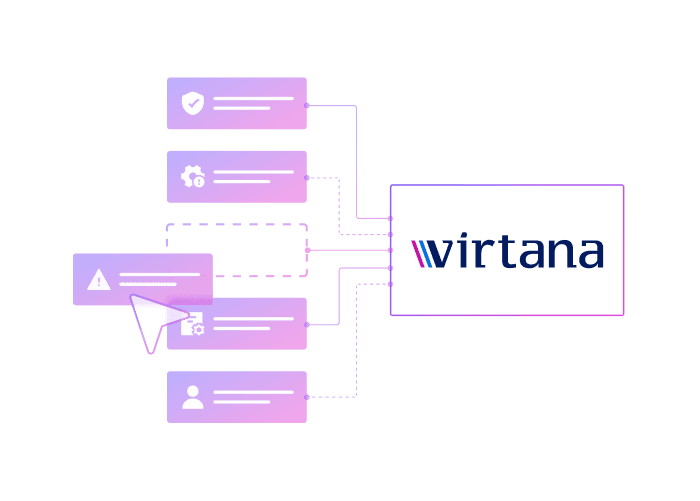What truly sets high-performing companies apart is their ability to seamlessly align technology with their operations. It’s not just about having the latest tools and software; it’s about having a comprehensive view of all the business connections, both internal and external, and ensuring that your technology strategy and capabilities are in sync with your overall business needs.
Forrester’s high-performance IT research shows that companies with this strong alignment grow an impressive 2.4 times faster than their peers and are twice as profitable. Strong alignment pays off in tangible business results.
But how can companies, especially SaaS companies, achieve this coveted alignment? Let’s take a closer look.
Streamline Your SaaS Operations: Why a Centralized System is a Game-Changer
Do you know how SaaS companies have to juggle multiple software tools, subscriptions, and processes? It might get messy, doesn’t it? That is why it is crucial for them to have a centralized system to manage all their operations from one place. What are the main reasons?
- Visibility and control. Imagine having a single dashboard that gives you a crystal-clear view of all your SaaS tools, spending, user activity, and more. With this bird’s-eye view, you can easily keep tabs on your entire SaaS stack, identify underutilized features, optimize subscriptions based on actual usage data, and streamline your operations.
- Governance and security. With a centralized system, you can establish clear rules and processes for managing your SaaS lifecycle. You can implement proactive security measures such as role-based access control (RBAC), integrate with security monitoring tools (SIEM), and keep a watchful eye on potential threats.
- Automation and efficiency. You can automate the repetitive, manual tasks that consume your time and energy. Think onboarding new employees, offboarding departing employees, provisioning user licenses, and more.
- Continuous monitoring and optimization. With a centralized system, you’ll have access to all the data and insights you need to optimize your SaaS stack for cost-effectiveness and security. You can track key performance indicators (KPIs) and measure end-to-end processes, ensuring everything is running smoothly and efficiently.
- Cost savings. Let’s face it, SaaS subscriptions can add up quickly, and it’s easy to lose track of unused or duplicate tools. A centralized platform can help you identify and eliminate this wasteful spending. Plus, with accurate data on your software usage and budgets, you can more accurately forecast your costs and negotiate better deals with vendors.
One centralized system is like having a super-efficient personal assistant that keeps your SaaS stack organized, secure, and cost-effective. It’s a game-changer for companies looking to streamline their operations and stay ahead of the curve.
How can Salesforce help with running operations from one place? Salesforce is a powerful CRM platform designed to help companies streamline their sales processes, customer engagement, communications, and account management. We will provide you with a detailed explanation of each of these areas.
Supercharge Your SaaS Sales with Salesforce Automation Capabilities
Salesforce is a ground-breaking platform for SaaS businesses looking to streamline their sales processes and gain better visibility into their pipeline. Its powerful automation capabilities allow sales teams to focus on what they do best, closing deals.
Lead management automation
You can automatically assign leads to the right sales reps based on predefined criteria such as location, industry, or lead score, and send automated email sequences to nurture leads and keep them engaged throughout the sales process.
Salesforce also automates the process of updating lead statuses and adding relevant tags based on prospect actions, such as email opens, meeting bookings, or content downloads.
Opportunity management automation
You can create opportunities in CRM when a lead is qualified and ready to engage. This seamless transition from lead to opportunity ensures that no potential deal is missed. You can also set up automated workflows to notify sales managers when deals reach certain milestones or are at risk, so they can intervene and change course.
Automated Customer Onboarding and Renewals
When a deal closes, Salesforce can automatically create new customer records and accounts, streamlining the onboarding process. It can also set up workflows to send onboarding information, schedule kickoff calls, and provision SaaS accounts. As customer subscription end dates approach, you can send automated reminders and renewal information.
Sales analytics and reporting automation
You can automatically generate sales performance reports and send them to managers regularly, providing valuable insight into team performance. And set up automated alerts when key metrics deviate from targets or goals.
Seamless Customer Journeys: How Salesforce Improves SaaS Communication and Support
With its powerful features and seamless integration capabilities, Salesforce empowers SaaS companies to deliver exceptional customer experiences across all touchpoints.
Omnichannel support
Salesforce Service Cloud enables omnichannel support, allowing customers to seamlessly switch between channels like phone, email, chat, social media, and more. This ensures a consistent and personalized experience across all touchpoints, fostering customer satisfaction and loyalty.
Self-service portals
What if customers prefer to find solutions independently? Salesforce has got you covered. It helps SaaS companies build robust self-service portals with knowledge bases, FAQs, community forums, and AI-powered chatbots. This empowers customers to find answers on their own, reducing the load on support teams.
Case Management
When customers do need assistance, Salesforce provides a centralized case management system to track, prioritize, and resolve customer issues efficiently. Cases can be automatically routed to the right agents based on their expertise, and agents can collaborate, access knowledge articles, and leverage AI suggestions to provide timely and accurate resolutions.
Customer Data Platform
Salesforce also acts as a customer data platform, consolidating customer information from various sources into a single, 360-degree view. This comprehensive view enables SaaS companies to deliver personalized engagement tailored to each customer’s unique needs and preferences, fostering stronger relationships and customer loyalty.
Marketing Automation
Customer engagement goes beyond support. With Salesforce Marketing Cloud, SaaS companies can create personalized email campaigns, automate lead nurturing, and deliver targeted content based on customer behavior and data. This ensures that customers receive relevant and valuable information at every stage of their journey.
Analytics and Reporting
Salesforce offers advanced analytics and reporting capabilities that provide insight into customer behavior, preferences, and engagement metrics. This data helps SaaS companies develop strategies to continuously improve and refine their customer engagement efforts.
Integration Capabilities
Finally, Salesforce integrates seamlessly with other tools used by SaaS companies, enabling a cohesive system that captures the entire customer journey, from initial interaction to payment processing. This seamless integration ensures a consistent and unified experience for customers, regardless of the touchpoint or channel they choose to engage with.
Mastering Account and Opportunity Management: Salesforce’s Winning Strategy for SaaS
Account management
Salesforce enables SaaS companies to centrally manage all customer accounts, including key contacts, communication history, support cases, and more. This centralized approach provides a comprehensive view of each account, allowing teams to deliver personalized and proactive service. But that’s not all – Salesforce also allows you to segment accounts based on criteria like industry, size, location, or revenue, enabling targeted marketing and sales strategies tailored to specific customer segments.
Opportunity management
Salesforce helps SaaS companies manage all sales opportunities, from lead to close, while keeping them connected to the people and information they need to close each sale. Key features include creating opportunities, tracking changes in deal size and close dates, visualizing updates through list views and Kanban boards, and managing related stakeholders such as competitors, partners, and opportunity team members. With Salesforce, you’ll never miss a beat in the sales cycle.
Pipeline management
Pipeline management capabilities give SaaS companies a comprehensive view of their most important deals, from deal value to competition. This bird’s-eye view allows sales teams to focus on the opportunities that matter most. In addition, opportunity pipelines provide an estimate of expected business in a given period, enabling accurate revenue forecasting — a critical aspect for any SaaS business.
Analytics and Reporting
With Salesforce, SaaS companies can track key metrics such as lead conversion rates, average deal size, sales cycle length, and win rates. This data-driven approach provides valuable insights that can be used to optimize sales processes, identify top-performing products or verticals, and uncover growth opportunities. With Salesforce, you’ll always have your finger on the pulse of your sales performance.
Salesforce: The Unified Platform for Seamless SaaS Operations
Salesforce provides a comprehensive set of capabilities to help SaaS companies run their operations from a single, unified solution. Real-world examples demonstrate the effectiveness of implementing Salesforce across multiple aspects of business operations:
- Spotify uses Customer Relationship Management (CRM) to manage millions of user accounts, track subscriptions and preferences, and personalize music recommendations.
- AWS simplifies Customer Account Management, handling accounts of varying size and complexity across multiple industries. In addition, AWS uses Salesforce for efficient customer service, providing support through case management and proactive communication.
- DocuSign utilizes Salesforce for Sales Process Automation, streamlining contract workflows and enabling faster deal closures. In addition, Salesforce enhances customer engagement for DocuSign by providing an easy-to-use e-signature and document management experience.
In this era of technological change, having a comprehensive platform to manage and maintain all your business operations is a must. Why not start with Salesforce? Our Salesforce architects are ready to help your company. Contact us today to learn how Salesforce can streamline your SaaS operations and drive growth.
Case Study
Virtana: Salesforce Managed Services
Managing day-to-day Salesforce operations


